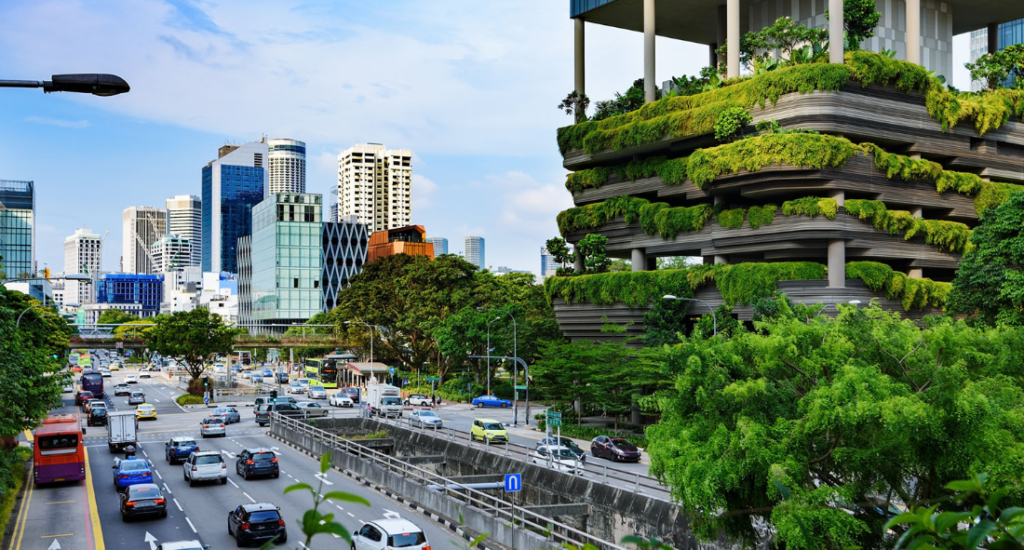Table of Contents
- Introduction to Sustainable Infrastructure
- The Role of Site Utilities in Sustainable Development
- Key Components of Modern Site Utilities
- Technologies Driving Innovation
- Benefits of Sustainable Site Utilities
- Challenges and Solutions in Implementation
- Future Trends in Infrastructure Development
- Conclusion
Introduction to Sustainable Infrastructure
In today’s rapidly urbanizing world, the need for sustainable infrastructure development has become more critical than ever. Cities worldwide strive to integrate innovative practices that align with ecological balance and resource efficiency. Sustainable infrastructure encompasses the physical structures we build and the thought processes and design principles behind them. It considers long-term impacts on the environment, economic viability, and the well-being of communities. A central aspect of this sustainable approach is managing and designing our site utilities, seamlessly integrating various systems to support life and activities while minimizing ecological footprints. Find out here to delve deeper into site utilities’ role in sustainable development.
The Role of Site Utilities in Sustainable Development
Site utilities are the backbone of any infrastructure project, providing necessary functions such as water supply, energy distribution, and waste management. Their design and implementation significantly influence a project’s sustainability profile. In sustainable development, these utilities play a crucial role by ensuring that operations are efficient and environmentally friendly. It entails integrating systems capable of optimizing resource use and reducing emissions. Sustainable utilities help in creating a balance between human needs and environmental preservation. They align with global sustainability goals like reducing carbon emissions and promoting renewable energy sources.
Key Components of Modern Site Utilities
Modern site utilities comprise several key components, each pivotal to enhancing sustainability. These include advanced water management systems that minimize wastage and improve recycling processes. Such systems are especially vital in regions facing water scarcity and other environmental challenges. Energy systems are another crucial component designed to enhance the use of renewable energy sources while minimizing waste. This approach not only ensures a reliable power supply but also significantly lowers the carbon footprint of a development project. Waste management facilities also play a crucial role, designed to allow for efficient processing and recycling wherever possible. Collectively, these components form a cohesive unit that lends sustainability to the entire infrastructure project.
Technologies Driving Innovation
The evolution of site utilities is primarily driven by cutting-edge technologies that continue to reshape how infrastructures are managed. Smart grids and the Internet of Things are leading-edge technologies introducing intelligence and connectivity to infrastructure systems. They allow real-time monitoring and control, enhancing efficiency and reducing operating costs. Integrating renewable energy resources with traditional systems is further modernizing energy management. As AI plays an increasing role in overseeing infrastructure, utilities are evolving to be more intelligent and adaptable. AI facilitates predictive maintenance and better operational optimization, heralding an era of more responsive and resilient infrastructure systems.
Benefits of Sustainable Site Utilities
The benefits of implementing sustainable site utilities extend across economic, environmental, and social dimensions. Economically, these systems can save substantial costs by improving resource efficiency and reducing waste. This decrease in operational costs often translates to lower utility bills for end-users, making these projects financially attractive. Environmentally, sustainable utilities contribute significantly by minimizing greenhouse gas emissions and reducing the overall ecological footprint. They promote environmental stewardship between various stakeholders. Socially, these systems improve living conditions by ensuring stable and safe access to essential services, boosting community health and well-being. Real-life examples of successful sustainable utilities, such as those implemented in cities like Copenhagen and Singapore, illustrate these benefits and inspire further adoption worldwide.
Challenges and Solutions in Implementation
Transitioning to sustainable site utilities presents challenges, including financial constraints, existing infrastructure limitations, and the need for specialized expertise. The initial investment required for sustainable systems is often perceived as a barrier. However, this challenge can be overcome with the help of financial incentives such as government grants and subsidies, which encourage investment in sustainable infrastructure. Innovative solutions such as modular construction techniques and advanced material sciences are continuously being developed to help tackle technical barriers. Public-private partnerships can also significantly bridge the gap between innovation and practical implementation by leveraging shared resources and expertise.
Future Trends in Infrastructure Development
Looking ahead, the future of infrastructure development is set to be characterized by trends that further accentuate sustainability and efficiency. As digital technologies become more entrenched in construction and urban planning, smart cities with interconnected, sustainable systems will likely become the norm. Developments in renewable energy technologies and materials science promise significant advancements in site utilities. These trends seek to enhance the livability of urban areas while also aiming to lessen the effects of climate change and resource depletion. As such, these upcoming shifts are expected to shape urban landscapes and redefine how communities function, paving the way toward a more sustainable future.
Conclusion
The journey toward sustainable infrastructure development is ongoing, marked by steady progress and innovative achievements. By adopting advanced technologies and embracing sustainable practices, cities can create greener, more livable environments that meet current demands without compromising future generations’ needs. As efforts continue, the appreciable benefits for communities and the planet become the sharper focus, emphasizing the importance of continued innovation and dedication in developing sustainable site utilities. As these practices become more prevalent, the potential for fostering communities that live harmoniously within their ecological means becomes more achievable.

